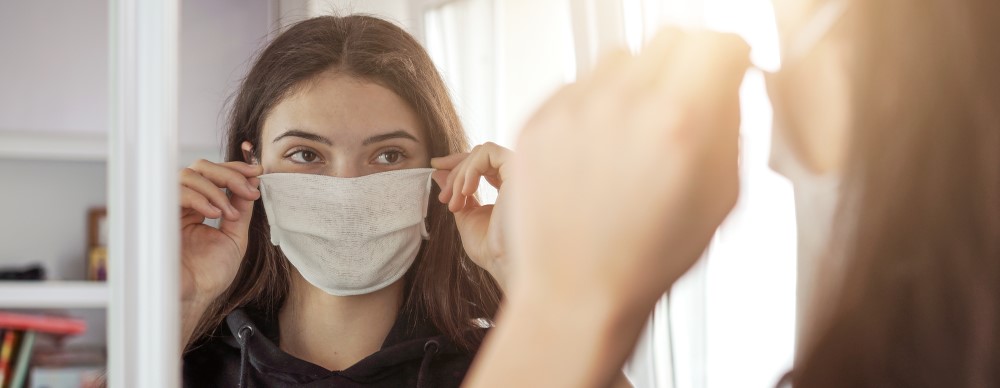
Wearing a face mask has become an obligation to help keep ourselves and our patients healthy. Unfortunately, shortages of PPE necessitate that we wear the same mask for long periods of time at work. We are also wearing masks when we’re off the clock. Chronic, prolonged mask use can cause skin problems which can be annoying and painful. There is little satisfaction in knowing that no one but you knows what’s under the mask!
Friction is one of the ways masks damage skin. They rub, sometimes viciously, on certain areas of the face. The bridge of the nose, the cheekbones, and behind the ears are common sites of discomfort. The continuous friction can cause the affected areas to be sore, red, and even ulcerate. Readjusting the mask repeatedly can further aggravate the way masks rub certain areas. It also introduces germs and other irritants that are on the hands.
Masks are necessarily occlusive, which can also contribute to skin problems. Trapped moisture, bacteria, oils, and dirt can clog pores and contribute to acne, rosacea, folliculitis and irritation.
Here are some ideas to help decrease the occurrence and severity of these problems:
- Wash your face prior to donning your mask. Ideally, use a bland, fragrance free cleanser and rinse well to remove all the residue. After washing, apply a moisturizer that is fragrance free. Certain ingredients like ceramide, hyaluronic acid and dimethicone can help protect your skin without contributing to breakouts. Don’t apply makeup; it dirties the mask and can contribute to clogged pores.
- If masks are irritating specific areas, consider steps to decrease friction focally. A thin dressing can be applied to the bridge of the nose under the moldable wire strip. Paper tape, a hydrocolloid dressing or band aid are thin barriers that cushion the bite of the mask. For irritation behind the ears, there are “extenders” to which the elastic straps can be attached so the mask is held behind the head but doesn’t rub behind the ears. In addition, a variety of products are available to hold the elastic in place around the ears but not in direct contact with the skin. Of course, if you are using an N95 mask, a fit test is necessary to be sure that modifications you might want to make don’t compromise the protective seal between the mask and your face.
- Replace surgical masks as often as possible for your setting. In our clinic, we use the same mask for about a week, and keep them sanitary by putting them individually in labeled paper bags and heating them to 150 degrees Fahrenheit for 30 minutes at the end of the day. Cloth masks should be washed after every use, ideally with a fragrance-free detergent in hot water. They should also be dried at the highest heat setting in the dryer. If you don’t have access to a washer and dryer, masks can be handwashed in a solution of 1 gallon water with 5 tablespoons of bleach, and dried in the sun.
- For pimples that arise despite these measures, consider washing your face once or twice daily. Use a 10% sulfur soap, or cleansers containing salicylic acid or glycolic acid. There are also OTC products with salicylic acid and benzoyl peroxide to spot treat lesions as necessary when you are not wearing your mask (at night). Be sure that your moisturizer is labeled “non-comedogenic”.
- For redness, itching or swelling from the mask, cool compresses can be soothing at the end of the day. A small amount of 1% hydrocortisone cream may also help, but should only be applied when a mask won’t cover the treated area for at least two hours.
If simple changes to your skin care routine do not alleviate breakouts or irritation, or you think you have an infection or a severe contact dermatitis, see a dermatologist. Most practices, like ours, offer virtual visits as well as in person visits to help with more stubborn or complicated skin issues.